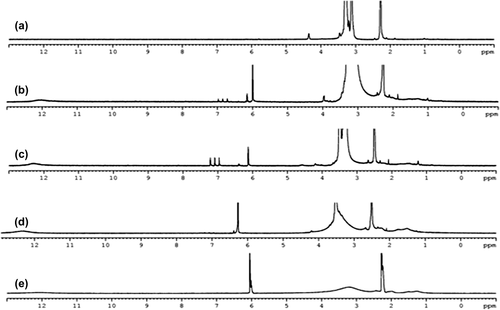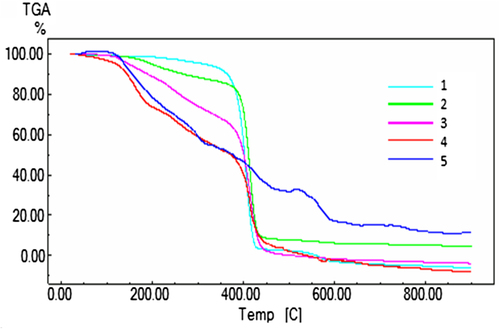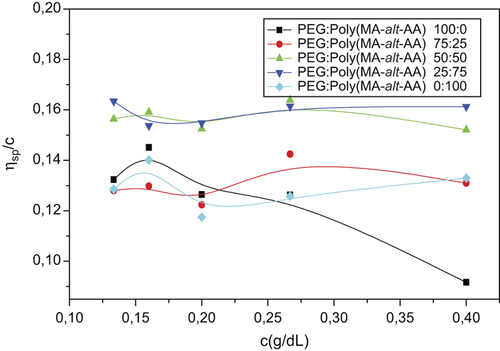Figures & data
Table I. Summary of equations of miscibility parameters (Δb, Δk, α, β, ΔB, and μ).
![Figure 1. ATR-FTIR spectrum of poly(MA-alt-AA) copolymer [MA with AA was carried out in p-dioxane in the presence of benzoyl peroxide (BPO) (0.1%) as an initiator at 70°C, under a nitrogen atmosphere, for an 8 h monomer feed MA/AA →50/50].](/cms/asset/8c101a6a-e0cb-4d55-920a-a0dd353fc8a1/ianb_a_980506_f0001_b.gif)


Table II. DTA and TGA data for the pure polymers and their blends ratios of poly(MA-alt-AA)/PEG; 0/100, 25/75, 50/50, 75/25 and 100/0.



Table III. Huggins constant, kH, and intrinsic viscosity [η], calculated according to the Huggins equation, with different mixing ratios of poly(MA-alt-AA):PEG at 25°C ± 0.1 in water.
Table IV. Calculated intrinsic viscosity, [η], and Huggins constant, kH, according to the Huggins equation in the viscosity experiments of poly (MA-alt-AA)/PEG, with different mixing ratio at 25°C ± 0.1 in water.




